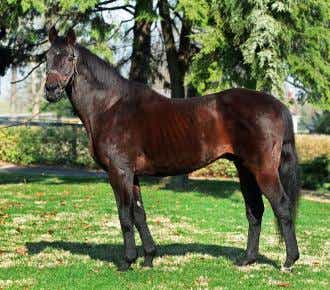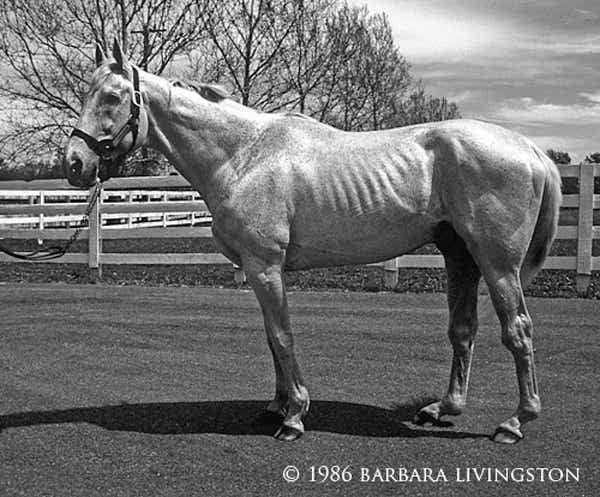There is no PPE test. Like another poster mentioned, the only definitive is necropsy. You can do a nuchal ligament biopsy but it is incredibly invasive and is usually a last ditch effort for insurance and/or breeding reasons.
There are a few different types of DSLD/ESPA: there are horses who show clinical symptoms before the age of 8 and the prognosis for them is incredibly poor and the best route is immediate euthanasia, and then there are horses who show clinical symptoms after 10-15 – for these horses, the prognosis is a little better in the sense their pain and symptoms can be managed, until they cannot.
DSLD/ESPA is diagnosed by a combination clinical symptoms:
-age of the horse
- windpuffs or swelling in and around fetlock
- lameness history, transient forelimb lameness
- body soreness
- behavioral changes
- difficulty lying down or getting up
- loss of condition including failure to develop topline in work
- ultrasound of suspensories - should see ‘fraying’
- dropping of pasterns.
Some owners might opt to do the nuchal ligament biopsy, but as mentioned it is invasive and painful for the horse.
Some shared symptoms I have seen in DSLD/ESPA cases that are no way peer reviewed: -
- elasticity of the body and back, great movers
- loss of condition, visually ‘sunken’ topline including ‘tight’ neck and shoulder
- dropped belly
- standing camped under
- neurologic movement most noticeable at trot
I should point out that the dropping pasterns are one of the last clinical symptoms of the disease and are a symptom of failing connective tissue, so if you see this in a horse, the ESPA is already quite progressed.
Proximal Suspensory Desmitis and soft pasterns can clinically present as similar to DSLD, but DSLD/ESPA is a connective tissue disorder, in its simplest terms. The other two are injury and anatomy, in that order. Horses naturally straighten through their hocks as they age and horses born fundamentally straight through their hock can look like DSLD as they become aged. Horses who raced or had long careers in eventing or dressage can appear to have dropped pasterns as their bodies age, lose elasticity, and older injuries cause compensation.
PSD and dropped pasterns can also show in aged horses, like the above two images provided by another poster, which are of stallions that were never biopsied for DSLD/ESPA. I would be hesitant to apply any diagnosis to an aged horse especially if it appears in good condition otherwise. See: Mr P, the bay in the photos above. Mr P stood at stud until his sudden death (colic) at 29 - a horse with DSLD/ESPA would not have been able to sustain the books he did, live cover too.
I would trust your gut. If either parent are available, see how they are doing. DSLD/ESPA has a genetic component, and if offspring has it chances are someone else in the family does. The mode of inheritance is not well understood yet, and it doesn’t appear to be Mendelian the way color or WFFS inheritance can be, for example.
DSLD/ESPA does have the promising attention of several large vet schools. It appears they are working on trying to isolate the markers responsible so they can manufacturer a hair or blood test for it.


